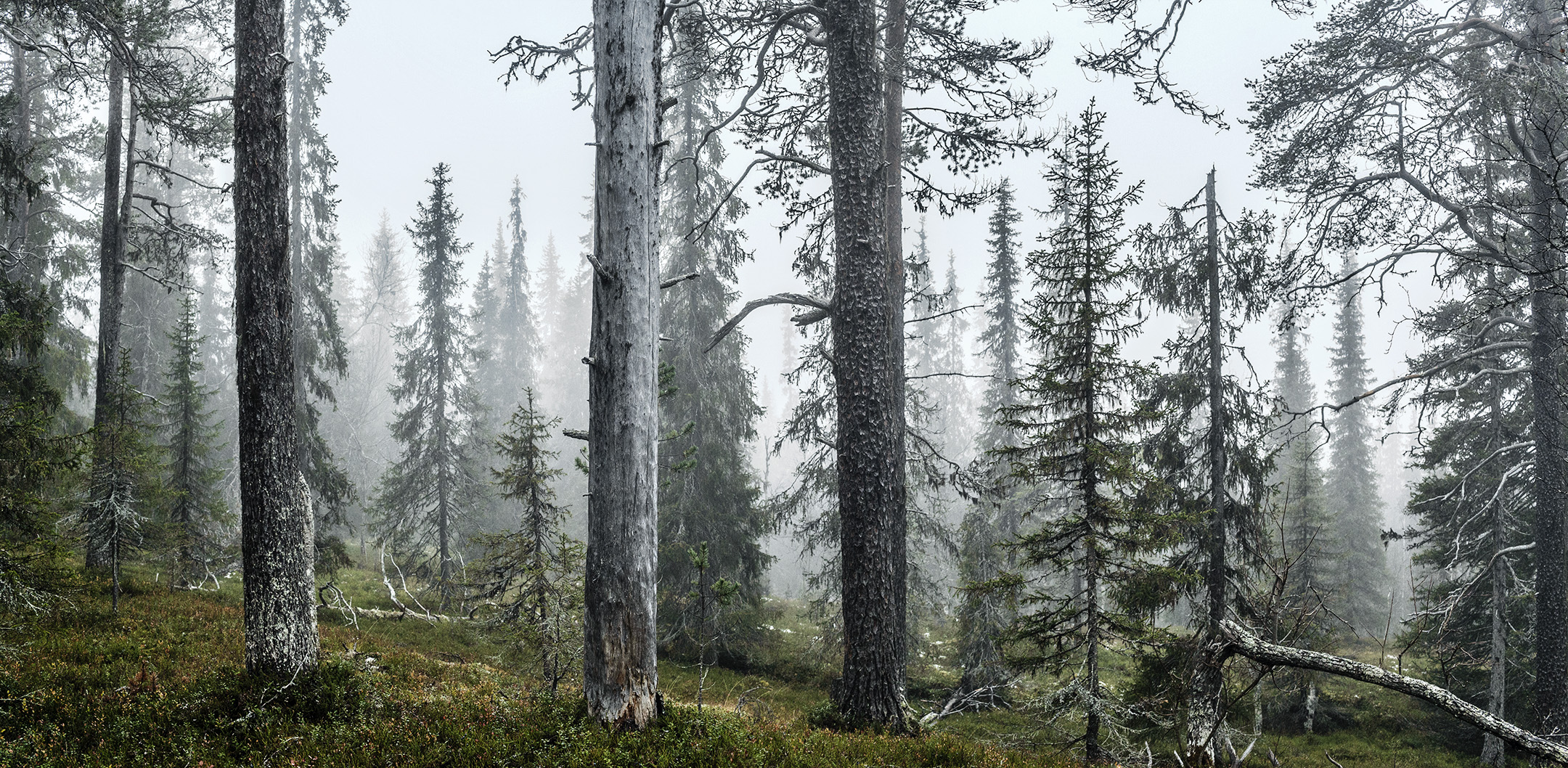Metsiemme kelot
Hopeanharmaat kelot ovat olennainen ekologinen ja visuaalinen osa luonnonmetsiä. Kelot voivat seisoa pystyssä satoja vuosia puun kuoleman jälkeen ja niillä tiedetään elävän joukko erikoistuneita eliöitä. Myös muut kuin kelopuuhun erikoistuneet metsän eliöt voivat hyötyä kelon pitkäikäisyydestä ja puumateriaalin kestävyydestä, ja samoista syistä kelot ovat haluttua rakennusmateriaalia myös ihmisille. Kelot ovat kulttuurisesti ja metsiin liittyvien aineettomien arvojen kannalta metsien tärkeimpiä piirteitä.
Talousmetsistä kelot ovat kutakuinkin hävinneet – asutuilta seuduilta pitkään jatkuneen metsien käytön seurauksena jo aiemmin, ja syrjäseuduilta metsien talouskäytön voimistumisen myötä. Häviämisen ekologiset vaikutukset kuitenkin tunnetaan huonosti.
Tämä verkkosivusto kertoo Kelo-hankkeesta, jossa syvennymme tarkastelemaan keloja tieteen ja taiteen keinoin. Tutkimme luonnontieteilijöiden ja valokuvataiteilijoiden voimin kelojen syntymekanismeja, maisematason luontaista dynamiikkaa ja merkitystä hiilen kierrolle sekä lajien monimuotoisuudelle alueilla, joista keloja vielä löytyy. Tärkeänä näkökulmana on luonnon hitaisiin kiertokulkuihin puuttumisen kauaskantoiset seuraukset, sekä kelojen kaltaisten hitaiden piirteiden palauttamisen vaikeus.
Perustuen projektissa kerättyyn ekologiseen tietoon, kelojen ja niiden luontaisen dynamiikan palauttamista metsiin tutkitaan koejärjestelyn avulla.
Uusimmat postauksemme:
6.3.2025 – Pieni oppitunti hyperspektrikuvantamisesta
25.9.2023 – Kelo-projektin ahkera maastokesä
23.3.2023 – Kaisa Junninen: Kääpien elämää Koitajoella





